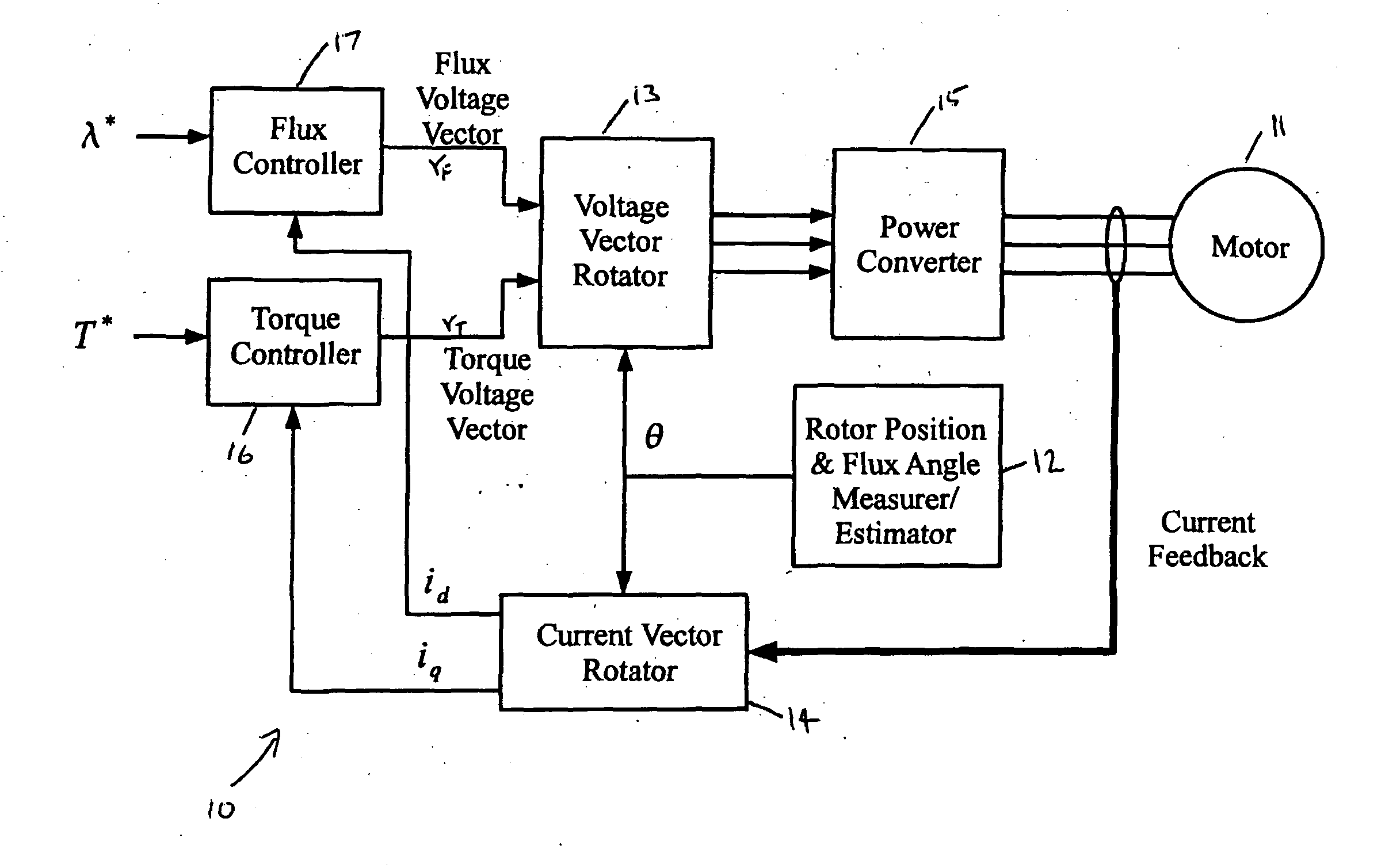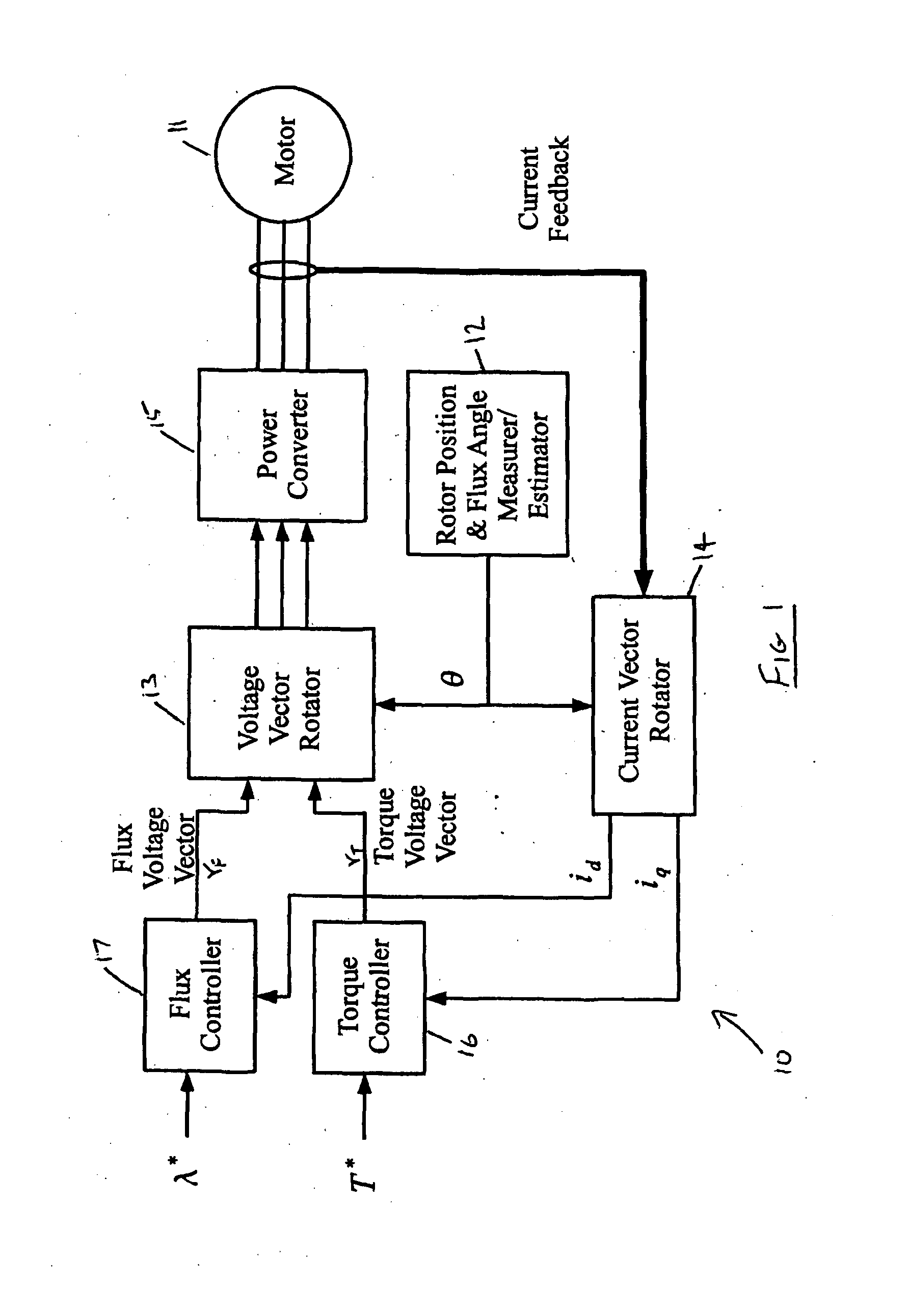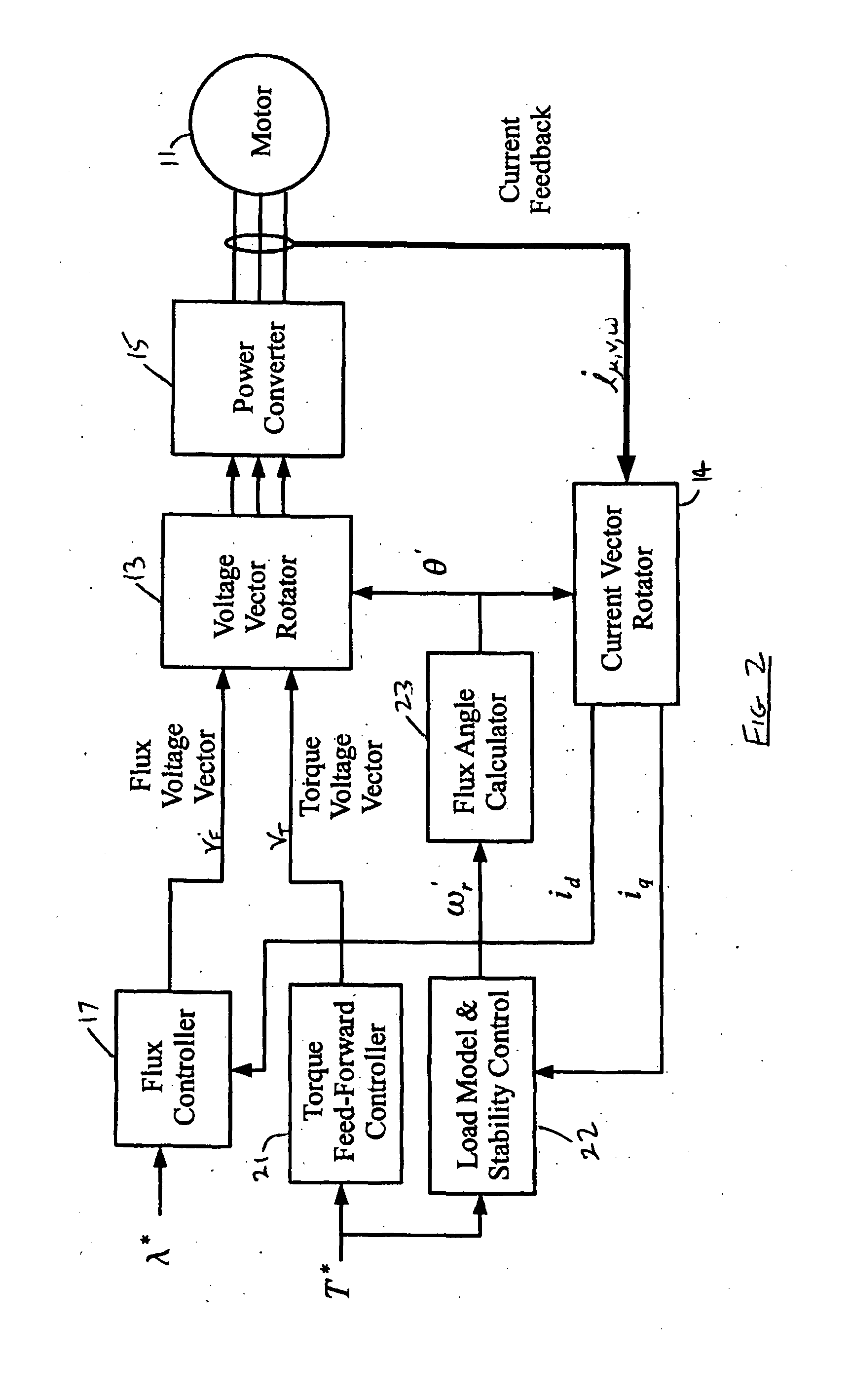Sensorless ac motor controller
a sensorless ac motor and controller technology, applied in the direction of synchronous motor starters, commutation monitoring, modelling/simulation of control, etc., can solve the problems of reducing the reliability of the motor, low cost, poor performance due to mechanical vibration
- Summary
- Abstract
- Description
- Claims
- Application Information
AI Technical Summary
Benefits of technology
Problems solved by technology
Method used
Image
Examples
Embodiment Construction
[0137]Feed Forward Torque Control (FFTC) is a new technique for sensorless control of the PMSM which approaches the sensorless control problem in a different way to previous research.
[0138]All previous methods, except the stepper motor, are based around estimating the rotor position motor terminal measurements instead of measuring it directly. FFTC uses the reverse of this process. FFTC starts with the required motor torque then calculates the wanted motor position from a model of the load and the required motor voltages from an inverted model of the motor (which converts motor currents to voltages instead of voltages to currents). Errors between the rotor position applied to the motor and the actual rotor position are corrected at high speed by using the error in the motor currents to correct the load model and at low speed by increasing the motor current in the correct phase sequence to lock in the rotor position, similar to a stepping motor. Standard speed and position feedback l...
PUM
 Login to View More
Login to View More Abstract
Description
Claims
Application Information
 Login to View More
Login to View More - R&D
- Intellectual Property
- Life Sciences
- Materials
- Tech Scout
- Unparalleled Data Quality
- Higher Quality Content
- 60% Fewer Hallucinations
Browse by: Latest US Patents, China's latest patents, Technical Efficacy Thesaurus, Application Domain, Technology Topic, Popular Technical Reports.
© 2025 PatSnap. All rights reserved.Legal|Privacy policy|Modern Slavery Act Transparency Statement|Sitemap|About US| Contact US: help@patsnap.com



